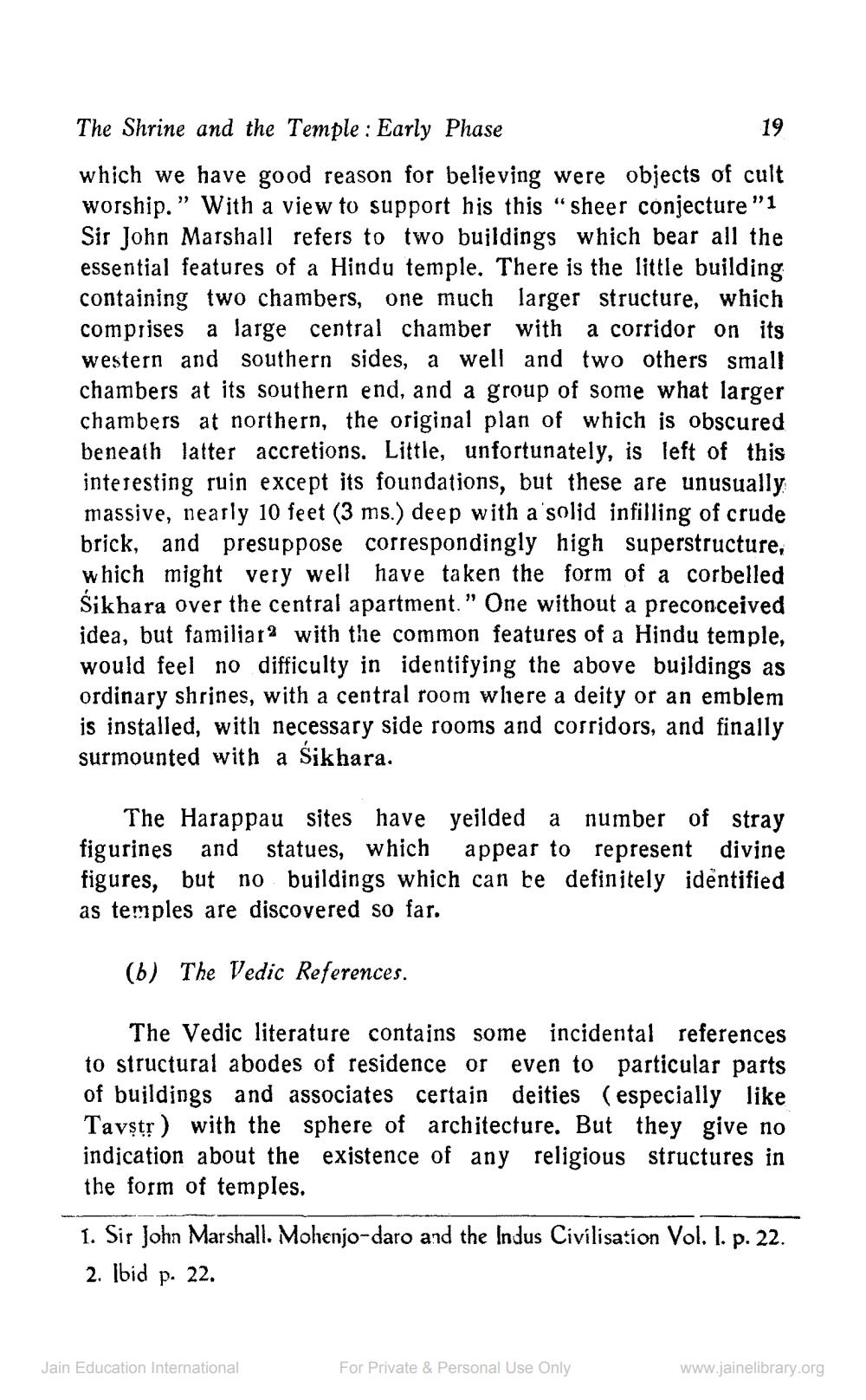________________
19
The Shrine and the Temple: Early Phase
"1
which we have good reason for believing were objects of cult worship." With a view to support his this "sheer conjecture Sir John Marshall refers to two buildings which bear all the essential features of a Hindu temple. There is the little building containing two chambers, one much larger structure, which comprises a large central chamber with a corridor on its western and southern sides, a well and two others small chambers at its southern end, and a group of some what larger chambers at northern, the original plan of which is obscured beneath latter accretions. Little, unfortunately, is left of this interesting ruin except its foundations, but these are unusually massive, nearly 10 feet (3 ms.) deep with a solid infilling of crude brick, and presuppose correspondingly high superstructure, which might very well have taken the form of a corbelled Sikhara over the central apartment." One without a preconceived idea, but familiar with the common features of a Hindu temple, would feel no difficulty in identifying the above buildings as ordinary shrines, with a central room where a deity or an emblem is installed, with necessary side rooms and corridors, and finally surmounted with a Sikhara.
number of stray
The Harappau sites have yeilded a figurines and statues, which appear to represent divine figures, but no buildings which can be definitely identified as temples are discovered so far.
(b) The Vedic References.
The Vedic literature contains some incidental references to structural abodes of residence or even to particular parts of buildings and associates certain deities (especially like Tavstr) with the sphere of architecture. But they give no indication about the existence of any religious structures in the form of temples.
1. Sir John Marshall. Mohenjo-daro and the Indus Civilisation Vol. I. p. 22. 2. Ibid p. 22.
Jain Education International
For Private & Personal Use Only
www.jainelibrary.org




